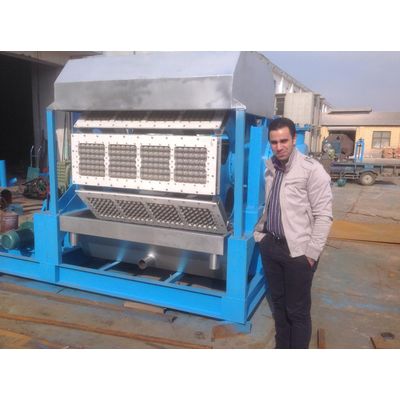

- Home
- Companies
- Beston Group Co., Ltd.
- Articles
- How to Select the Right Paper Egg Tray ...

How to Select the Right Paper Egg Tray Making Machine: Key Considerations
When investing in a paper egg tray making machine, understanding the factors that influence performance, durability, and cost-efficiency is essential. Making an informed choice not only ensures operational productivity but also maximizes the return on investment. Below are key considerations to guide your selection process.
1. Production Capacity and Scale
Evaluate your operational requirements to determine the machine's optimal production capacity. Egg tray machine manufacturers design machines with varying output levels, ranging from small-scale manual models to fully automated systems. If you cater to a large-scale market, a high-capacity machine with minimal downtime is indispensable. Conversely, smaller operations might benefit from compact, semi-automatic machines that balance cost and functionality.
2. Automation Level
Automation plays a critical role in reducing labor costs and enhancing consistency. Fully automatic machines are equipped with advanced mechanisms for forming, drying, and stacking trays. These systems are ideal for operations requiring high precision and minimal manual intervention. On the other hand, manual and semi-automatic machines, though less efficient, can be cost-effective for smaller businesses. Align the machine's automation level with your workforce and budgetary constraints.
3. Cost Analysis
The paper egg tray making machine price varies significantly based on factors like production capacity, automation level, and brand reputation. While lower-cost models might seem appealing initially, they may incur higher maintenance and energy expenses over time. Balance the upfront cost with long-term operational costs to identify the most cost-effective option for your business.
4. Energy Consumption
Energy efficiency directly impacts operational costs. Modern machines often integrate energy-saving technologies, such as optimized drying systems and low-energy vacuum pumps. Evaluate the energy specifications of different models, as even marginal reductions in power usage can lead to significant savings over time. Consider machines with energy ratings that meet both production demands and sustainability goals.
5. Durability and Maintenance
Durability is a key factor in determining the machine's lifespan. Machines constructed with corrosion-resistant materials and robust components offer higher longevity, even under heavy usage. Additionally, look for models with accessible parts and straightforward maintenance procedures. Egg tray machine manufacturers often provide post-sale support and spare parts availability, ensuring uninterrupted operation.
6. Space Requirements
The physical dimensions of the machine should align with the available floor space in your facility. Fully automated systems often require more space for additional components like drying tunnels. Conduct a comprehensive layout analysis to ensure smooth workflow integration without overcrowding.
7. Material Compatibility
Paper egg tray machines utilize recycled paper as raw material, making them eco-friendly and cost-efficient. However, not all machines are designed to handle different types of paper with equal efficiency. Some machines may perform better with certain grades of paper, such as newsprint or kraft paper. Ensuring compatibility with readily available raw materials in your region minimizes operational bottlenecks and material wastage.
Conclusion
Choosing the right paper egg tray making machine demands careful evaluation of production needs, operational efficiency, and cost considerations. Collaborating with reputable egg tray machine manufacturers ensures access to high-quality machines, reliable customer support, and competitive pricing. By focusing on these key factors, businesses can optimize their investment and achieve sustainable growth.
